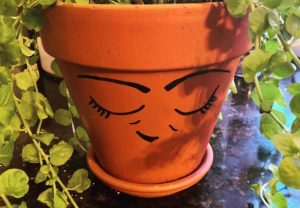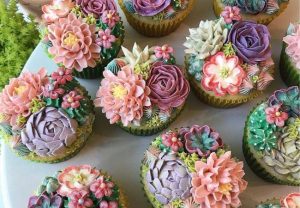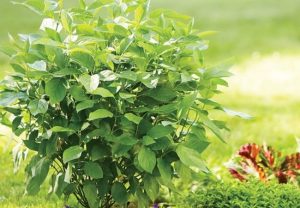Discover the secrets to keeping your Lipstick Echeveria (Echeveria agavoides) thriving with this comprehensive care guide. Learn about the ideal water, light, and nutrient requirements for this stunning succulent to enjoy its vibrant colors all year round.
The Lipstick Echeveria, also known as the Echeveria agavoides, is a captivating succulent that has stolen the hearts of plant enthusiasts worldwide. With its striking rosette shape and vibrant, coral-red hues, this plant adds a burst of color and charm to any indoor or outdoor setting. Whether you’re a seasoned gardener or a beginner, caring for this gorgeous succulent is relatively straightforward, and with the right guidance, you can ensure it thrives for years to come.
Water Requirements
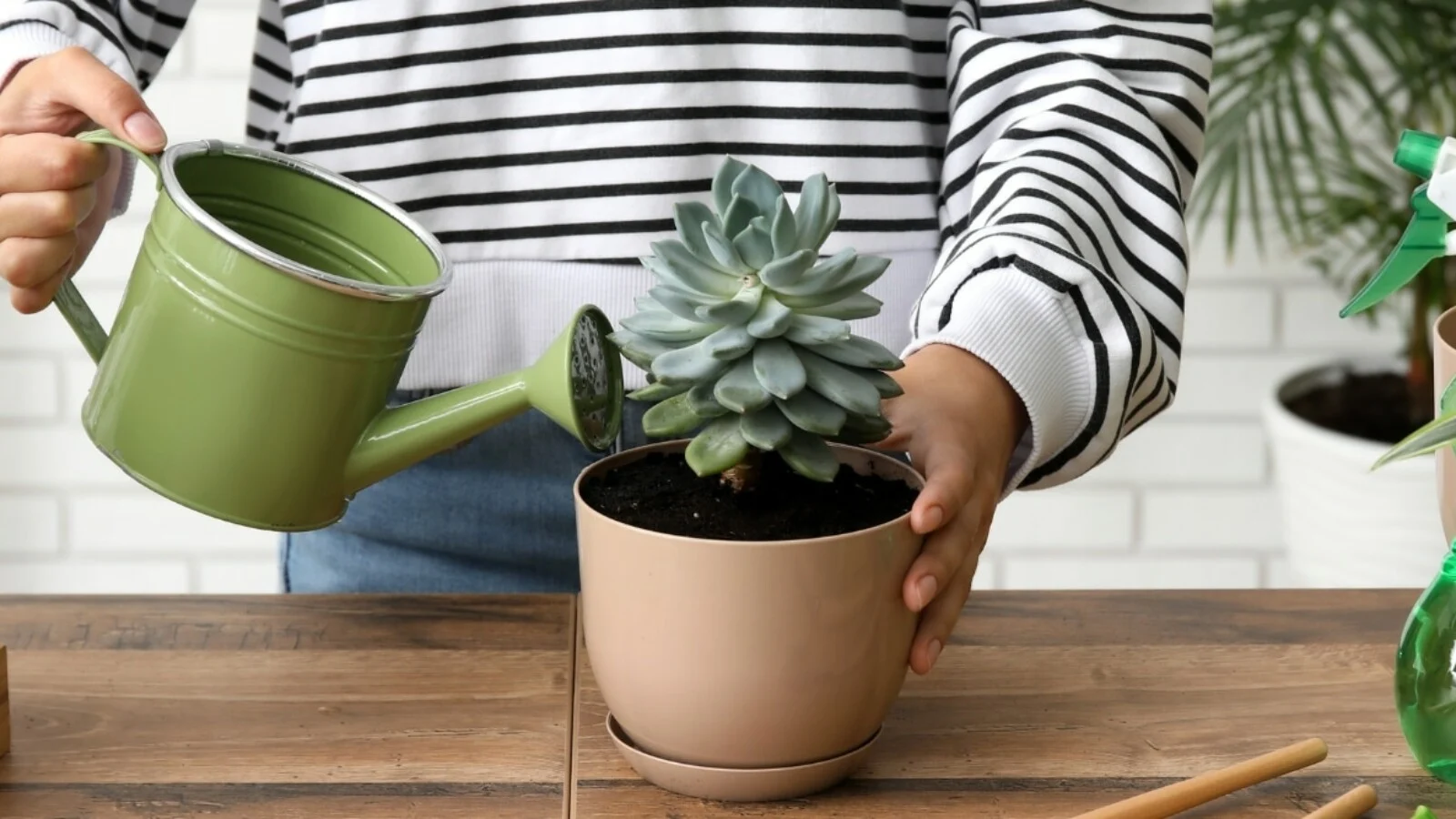
One of the key factors in keeping your Lipstick Echeveria healthy is proper watering. Like most succulents, this plant is drought-tolerant and prefers a well-drained soil mix. Here are some tips for watering your Lipstick Echeveria:
Soil Moisture: Before watering, check the soil moisture by sticking your finger into the potting mix. If the top inch or two feels dry, it’s time to water.
Watering Technique: When watering, saturate the soil thoroughly until water begins to drain from the bottom of the pot. Avoid getting water into the rosette, as this can lead to rot.
Frequency: During the growing season (spring and summer), water your Lipstick Echeveria when the soil is mostly dry, typically once every one to two weeks. In the winter months, reduce watering to once a month or when the soil is completely dry.
Drainage: Ensure your pot has adequate drainage holes to prevent waterlogged soil, which can lead to root rot.
Light Requirements
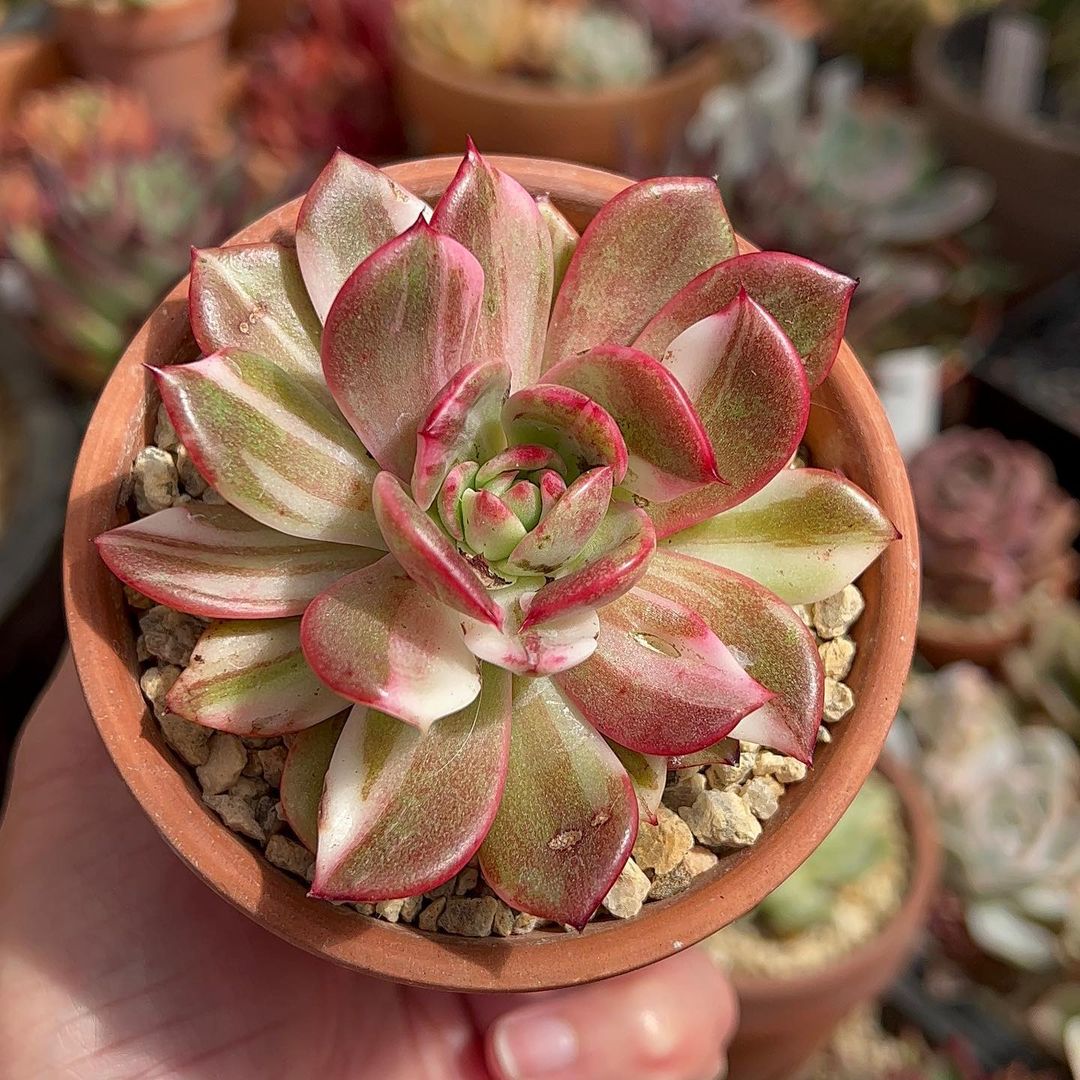
The Lipstick Echeveria thrives in bright, direct sunlight, which enhances its vibrant colors and compact growth habit. Here are some tips for providing the right light conditions:
Outdoor Placement: If growing your Lipstick Echeveria outdoors, choose a spot that receives at least six hours of direct sunlight per day. Gradually introduce the plant to direct sun to prevent sunburn.
Indoor Lighting: For indoor plants, place your Lipstick Echeveria near a south or west-facing window that receives ample sunlight. Supplement with grow lights if natural light is insufficient.
Acclimation: If moving your plant from a low-light area to a brighter location, gradually increase its exposure to direct sunlight to prevent stress or sunburn.
Color Intensity: The more direct sunlight your Lipstick Echeveria receives, the more intense its vibrant red and coral hues will become.
Nutrient Requirements
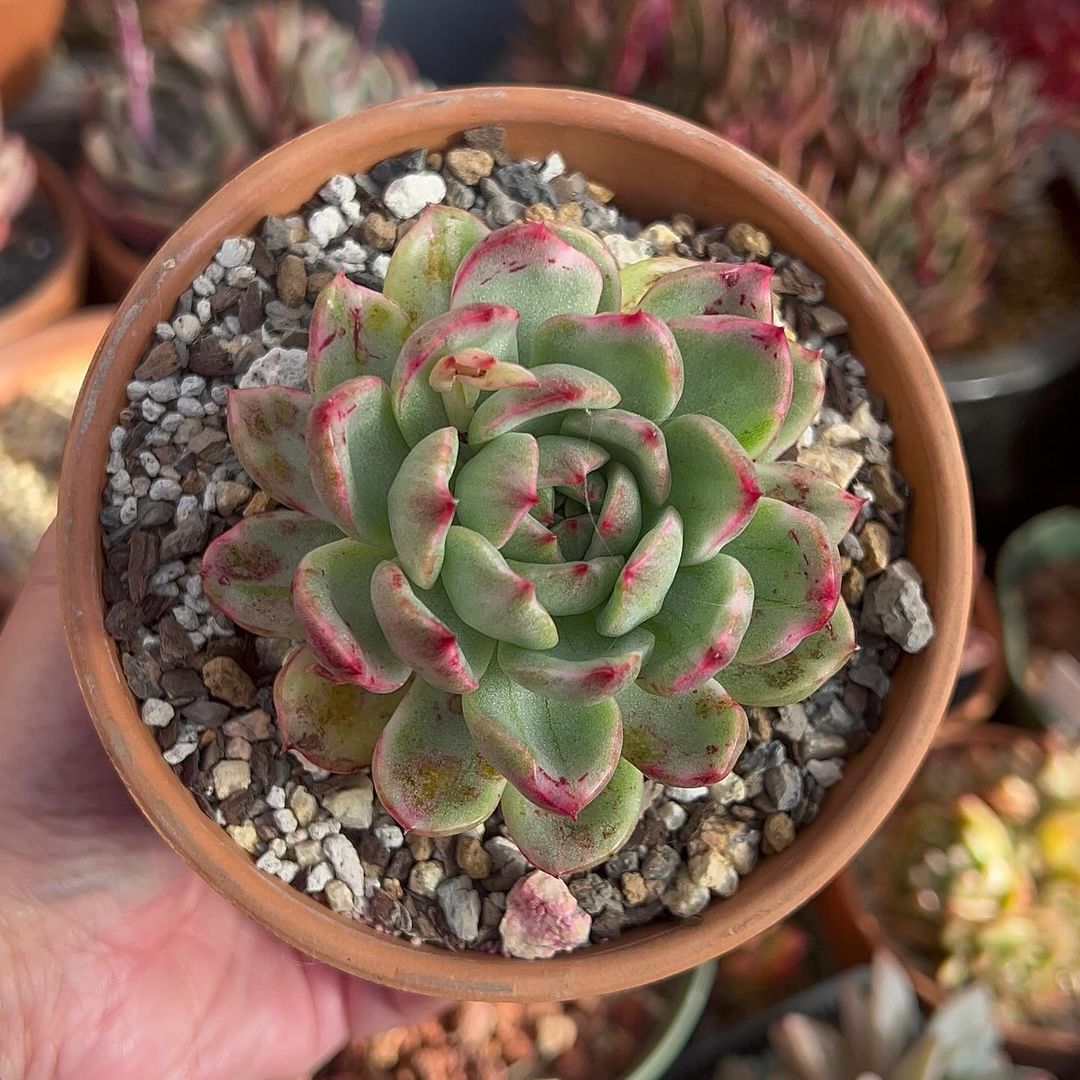
Lipstick Echeverias are not heavy feeders, but they can benefit from occasional fertilization to maintain their vibrant colors and healthy growth. Here’s what you need to know:
Fertilizer Type: Use a balanced, water-soluble fertilizer formulated for succulents or cactus plants. Look for an N-P-K ratio of 10-10-10 or similar.
Frequency: During the growing season (spring and summer), fertilize your Lipstick Echeveria once a month. Avoid fertilizing in the winter when the plant is dormant.
Dilution: Dilute the fertilizer to half or quarter strength to prevent salt buildup and potential root burn.
Flushing: Fertilizer Type: Occasionally flush the soil with plain water to remove any accumulated salts or minerals from the potting mix.
Potting Mix and Repotting
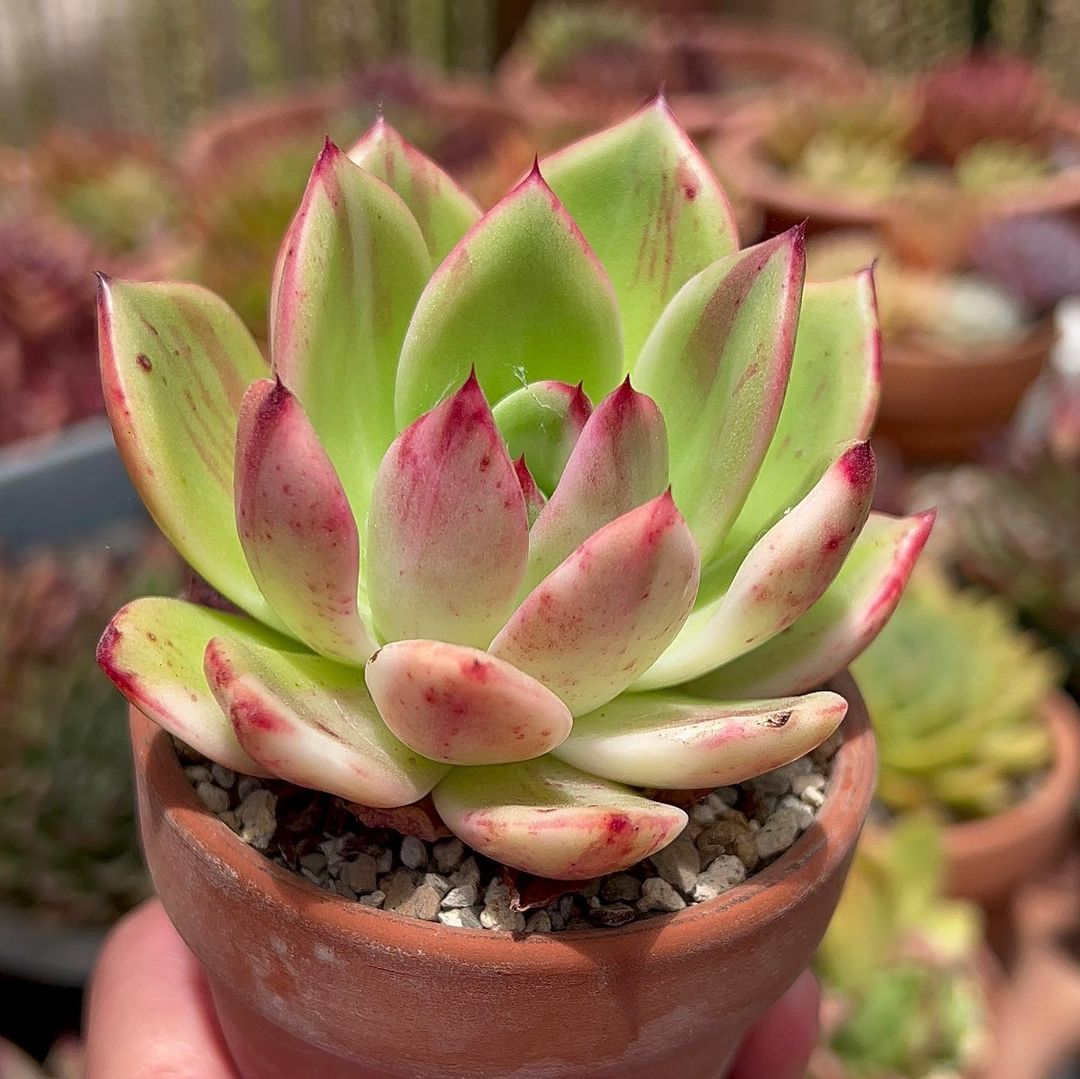
Lipstick Echeverias thrive in well-draining soil mixes specifically designed for succulent plants. Here are some tips for potting and repotting:
Potting Mix: Use a commercial cactus or succulent potting mix, or create your own blend by combining equal parts of potting soil, coarse sand or perlite, and small gravel or crushed lava rock.
Container: Choose a pot with excellent drainage holes to prevent waterlogged soil. Terra cotta or ceramic pots are ideal as they allow for better air circulation and water evaporation.
Repotting: Repot your Lipstick Echeveria every two to three years, or when it outgrows its current container. Gently remove the plant from its pot, trim off any dead or damaged roots, and replant in fresh potting mix.
Timing: The best time to repot is in the spring or early summer, just before the plant’s active growing season.
Propagation
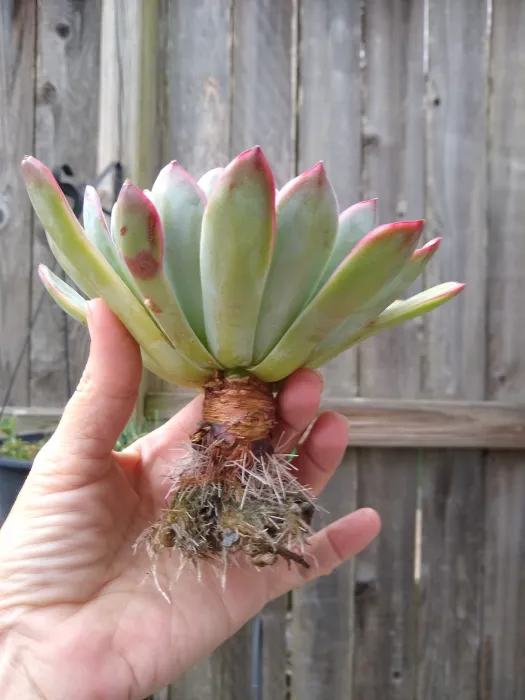
Lipstick Echeverias are easy to propagate, allowing you to share or expand your collection of these stunning succulents. Here are two common methods:
Offsets: Look for small offsets or “pups” growing at the base of the mother plant. Gently twist or cut these offsets off, allow the ends to callus over for a few days, and then plant them in a well-draining potting mix.
Leaf Cuttings: Carefully remove a healthy leaf from the mother plant, allowing it to callus over for a few days. Then, place the leaf on top of a well-draining potting mix and gently press it down. New roots and a rosette will eventually form.
With the right care and attention, your Lipstick Echeveria will thrive and reward you with its stunning beauty for years to come. Enjoy the vibrant colors, unique rosette shape, and low-maintenance nature of this captivating succulent.
Common Problems and Solutions
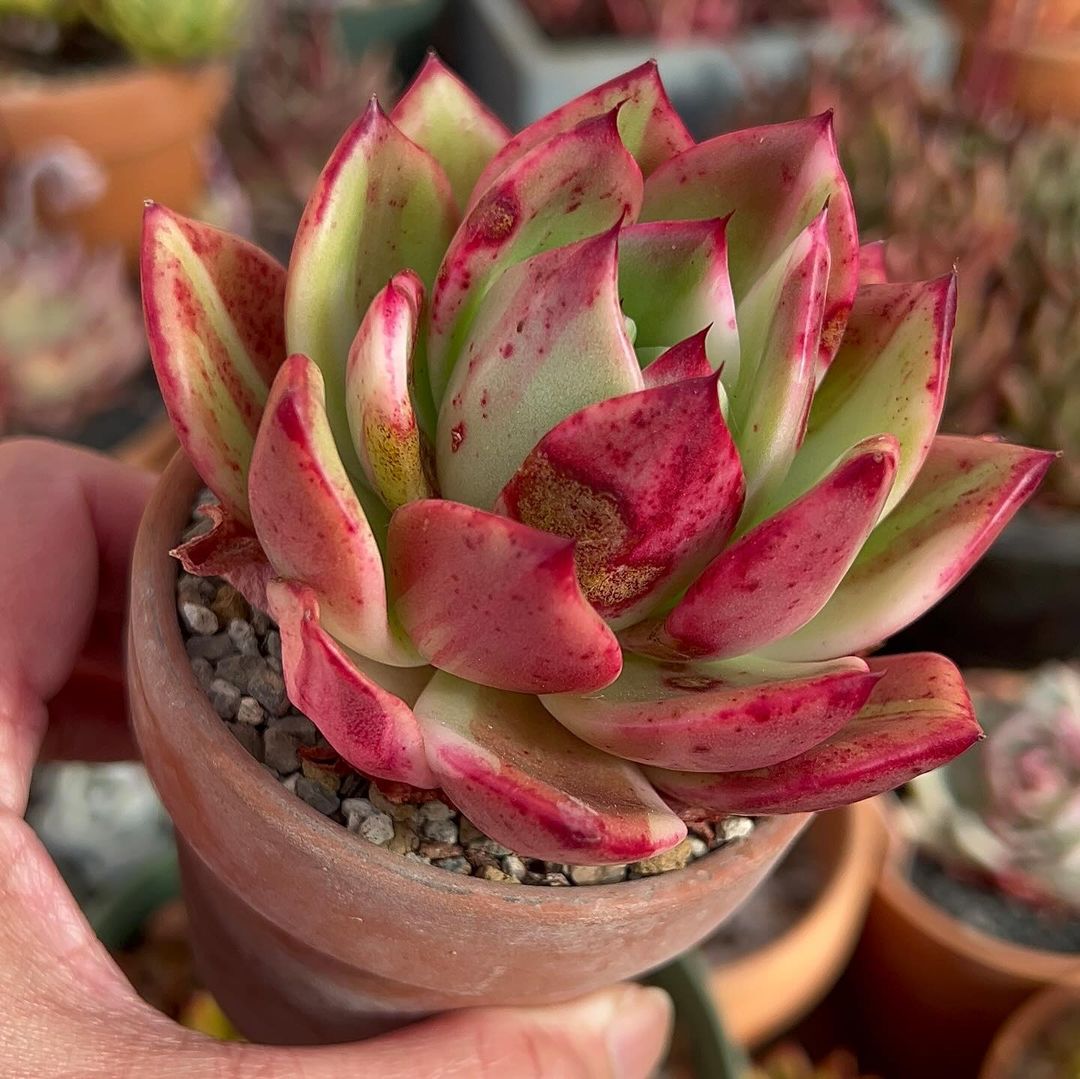
Even with proper care, Lipstick Echeverias may occasionally encounter issues. Here are some common problems and solutions:
1. Stretched or Leggy Growth: If your plant is stretching upward and losing its compact rosette shape, it’s likely not getting enough sunlight. Gradually increase the amount of direct light it receives.
2. Pale or Faded Colors: Lack of sunlight can also cause the vibrant red and coral hues to fade. Move your plant to a brighter location or supplement with grow lights.
3. Rot or Mushy Leaves: Overwatering is a common culprit for rot or mushy leaves. Allow the soil to dry out completely before watering again, and ensure proper drainage.
4. Shriveled or Wrinkled Leaves: Shriveling or wrinkling can indicate underwatering. Increase the frequency of watering and check for proper drainage.
5. Pests: Mealybugs, scale insects, and spider mites can occasionally infest Lipstick Echeverias. Isolate the affected plant, and treat with an insecticidal soap or neem oil solution.
Winter Care
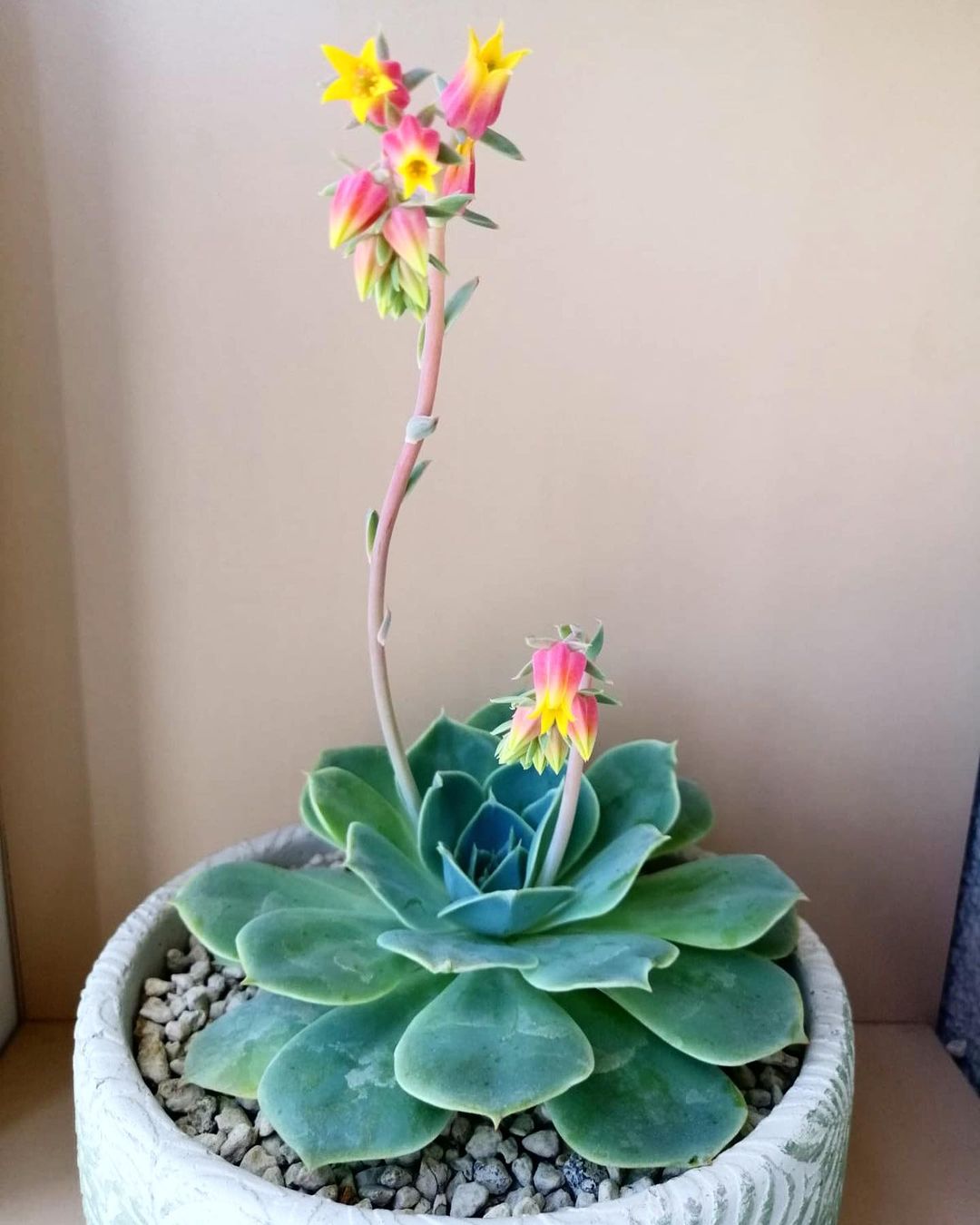
During the winter months, Lipstick Echeverias enter a dormant period and require slightly different care:
1. Reduced Watering: Cut back on watering frequency, allowing the soil to dry out almost completely between waterings.
2. Cooler Temperatures: Move your plant to a cooler location, ideally between 50-60°F (10-15°C). Avoid freezing temperatures.
3. Reduced Sunlight: Lower light levels during winter are acceptable, but ensure your plant still receives some bright, indirect sunlight.
4. No Fertilizing: Discontinue fertilizing until the plant resumes active growth in spring.
Grooming and Maintenance
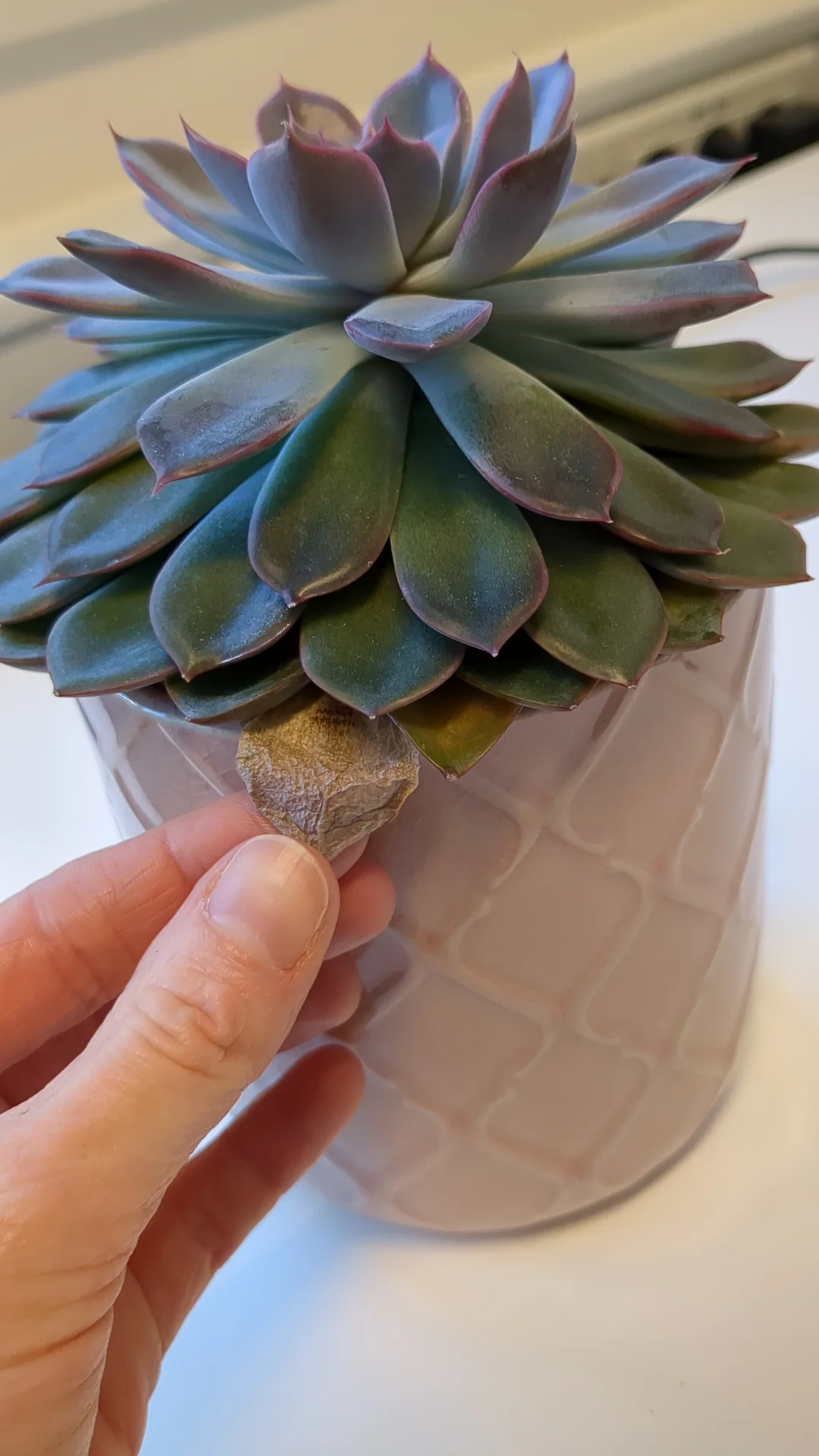
To keep your Lipstick Echeveria looking its best, regular grooming and maintenance are recommended:
1. Removing Dead Leaves: Gently remove any dead or dried-up leaves from the base of the rosette using clean scissors or pruners.
2. Trimming Leggy Growth: If your plant becomes leggy or stretched, you can trim off the top portion and propagate it to create a new, compact rosette.
3. Controlling Offsets: Remove any unwanted offsets or “pups” from the base of the plant to maintain its shape and prevent overcrowding.
4. Repotting: Repot your Lipstick Echeveria every two to three years to refresh the potting mix and provide ample room for growth.
With proper care and attention, your Lipstick Echeveria will reward you with its vibrant colors and captivating beauty for many years to come. Enjoy this low-maintenance succulent and let it add a touch of warmth and charm to your indoor or outdoor space.
